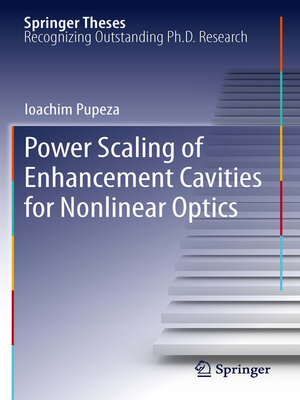Power Scaling of Enhancement Cavities for Nonlinear Optics
ebook ∣ Springer Theses
By Ioachim Pupeza

Sign up to save your library
With an OverDrive account, you can save your favorite libraries for at-a-glance information about availability. Find out more about OverDrive accounts.
Find this title in Libby, the library reading app by OverDrive.



Search for a digital library with this title
Title found at these libraries:
| Library Name | Distance |
|---|---|
| Loading... |
Enhancement cavities are passive optical resonators in which continuous-wave laser radiation or pulses of a frequency comb are coherently overlapped, allowing for a power and intensity scaling of up to several orders of magnitude. A prominent application is the table-top generation of bright, laser-like radiation in spectral regions where direct laser action is inefficient or not available at all, via intracavity nonlinear optical processes. However, to exploit the full capacity of this technique further progress is needed.
This thesis covers central problems of enhancement cavities, such as finding limitations in scaling the circulating power, measuring cavity parameters with high accuracy, tailoring transverse modes and coupling out radiation generated in the cavity. Unprecedented intracavity laser powers were demonstrated, surpassing previous results by an order of magnitude. As an application, harmonics of the fundamental 1040-nm radiation up to the 21st order are generated. Besides reporting these fine experimental results, the thesis provides an excellent introduction into the physics of enhancement cavities, supported by more than 140 references.
This thesis covers central problems of enhancement cavities, such as finding limitations in scaling the circulating power, measuring cavity parameters with high accuracy, tailoring transverse modes and coupling out radiation generated in the cavity. Unprecedented intracavity laser powers were demonstrated, surpassing previous results by an order of magnitude. As an application, harmonics of the fundamental 1040-nm radiation up to the 21st order are generated. Besides reporting these fine experimental results, the thesis provides an excellent introduction into the physics of enhancement cavities, supported by more than 140 references.







